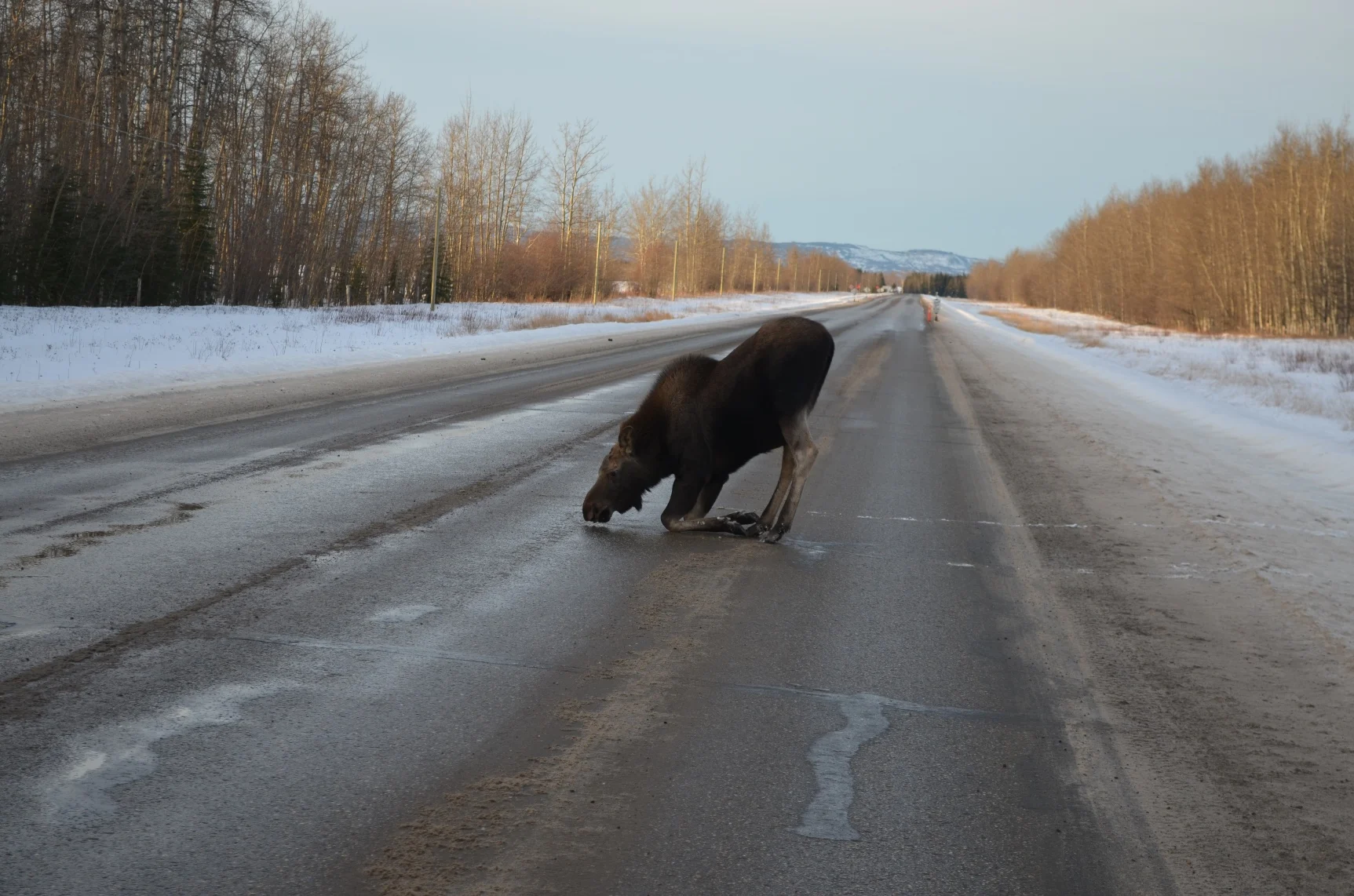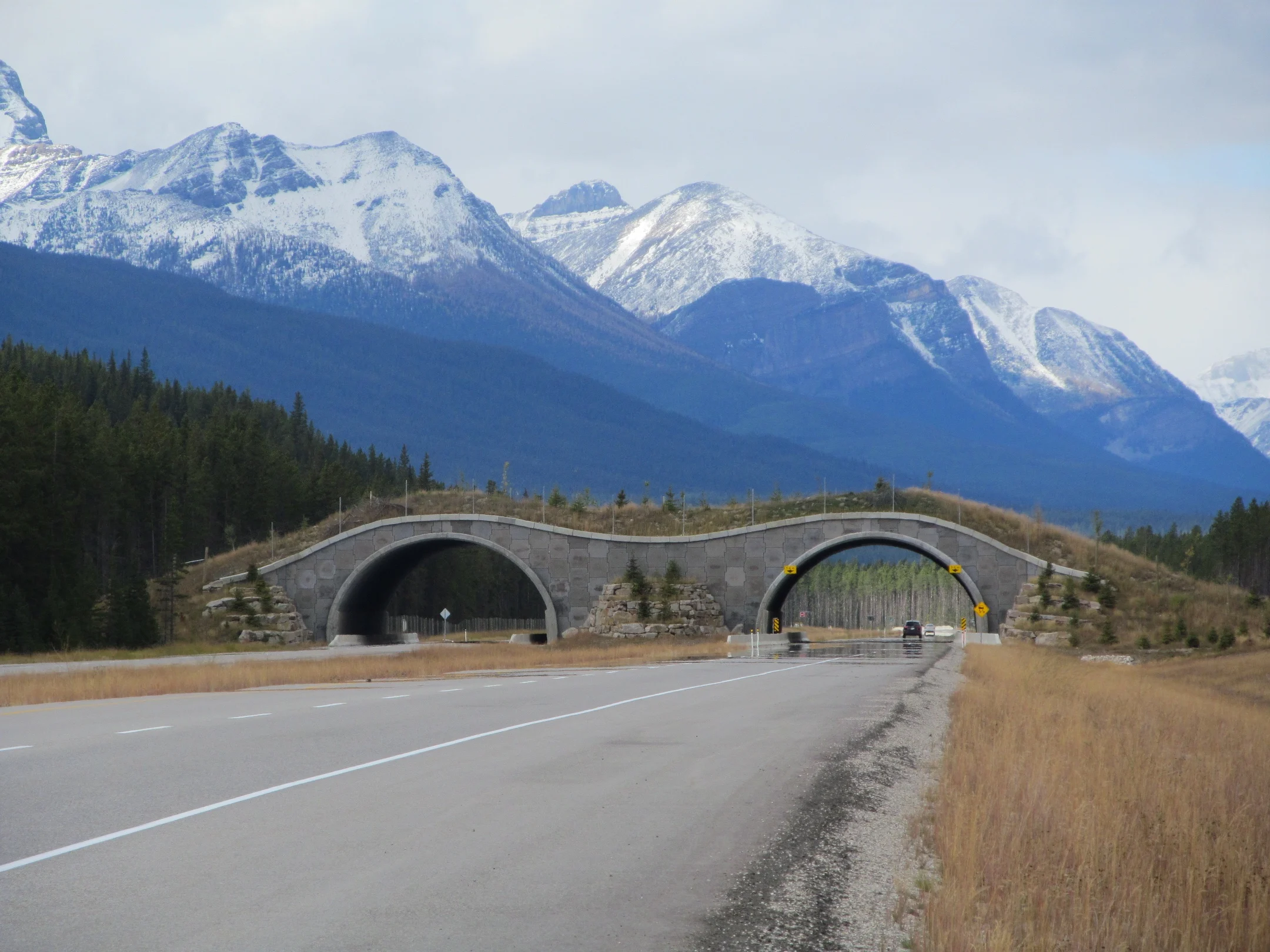
Get the latest from Samsara
Subscribe nowThere are over 300,000 wildlife-vehicle collisions in the United States every year. Over 24,000 of these collisions are fatal to animals and nearly 2,000 are deadly to the driver.
The Road Ecology Center estimates the total annual cost of wildlife-vehicle conflict is upward of $307 million—in California alone. The numbers are even more substantial in other parts of the world. On Highway BR-262, a road in Brazil considered to be the deadliest for wildlife, 2 million mammals die as a result of vehicle collisions each year.
These staggering numbers don’t paint an encouraging picture for those trying to spearhead change.
One such pioneer is Gayle Hesse. Hesse serves as the project coordinator for Wildlife Collisions Prevention Program (WCPP), an organization based in British Columbia determined to reduce instances of hazardous or fatal animal-vehicle accidents. Hesse is nothing short of an animal-safety enthusiast—she has a Google news alert set for “deer collisions” and her desktop background features a picture of a 7-foot moose sprawled across Highway 97 near Dawson Creek, BC.

Photo credit: Stephen Clark
How does Hesse get people so excited about wildlife collisions, especially when the statistics are stacked against her? That’s the easy part.
“People can talk about driving and stopping distance and braking distance and all that kind of stuff, but I like to talk about animals because people like to listen to stuff about animals,” she said. “There’s a lot of different ways to approach the topic, but everybody likes animals.”
Why do animals go on roads, anyway?
There are a number of reasons animals are drawn to the open road, beyond a means of simply getting from point A to point B.
“People need to remember that animals aren’t people. They think and perceive very differently than people do,” she said. “We all tell our kids, ‘Don’t go play on the road–it’s dangerous out there!’ But animals actually do like the road.”
Topping the list of reasons why roads are so attractive to animals is that they actually provide animals with a rich habitat.
“Think about it as a big, long linear pasture,” she said. “Lots of times it gets mowed or brushed. When you mow or brush those kinds of plants—like little willows alongside the road—they often regrow nice and tender. That kind of roadside maintenance makes a very good habitat for animals.”
Perhaps unsurprisingly, deer account for the vast majority of collisions on the road, particularly the ones that cause monetary damage.
“ like what is called ‘edge habitat,’” explained Hesse. “They like to be able to have trees and brush that they can duck into for cover and then they can just step out 10 to 20 steps to browse and then go back to the cover where they’re hidden or protected. When you think of a roadside corridor, that’s all it is—an edge habitat.”
Salted, wintertime roads are especially attractive to wildlife. Just like cattle receive nutrient-rich salt blocks, wildlife seek out wintry roads to get their fix of the nourishing vitamins the mineral provides.
And in the wintertime, especially in snow-covered landscapes, animals gravitate toward roads simply for the sake of convenience. It’s a lot easier to saunter along a well-maintained road than it is to plow through two or three feet of snow.
Why should drivers care?
Wildlife collisions pose a significant risk to both animals and drivers. Animals are often killed, and though human fatalities are less common, they do occur. More frequent outcomes include injury, vehicle damage, and emotional trauma.
Fraser Shilling, Ph.D., is a research scientist at UC Davis and has served as the co-director of the Road Ecology Center, a University of California, Davis organization devoted to designing sustainable transportation, for over 12 years. Although the center works on a wide range of projects related to transportation and ecosystem interactions, Shilling focuses a lot of his energy on reducing wildlife-vehicle conflicts.
“It’s kind of like climate change,” he said. “It’s this destructive thing, and we aren’t doing much relative to the size of the problem.”
At the core, there are two major societal impacts stemming from the same issue. Roadkill is a leading cause of mortality in wildlife, posing a major threat to wildlife populations. “The flip-side is that you’re also hurting people,” Shilling said. “You don't often get that–where both sides of the coin are bad. You’re destroying wildlife and hurting people.”
And although the occasional uplifting wildlife collision story surfaces, the outlook is dire. Wildlife-vehicle collisions continue to be one of the largest causes of preventable, human-caused deaths of animals.
How do we prevent wildlife collisions?
Reducing wildlife collisions requires a multi-prong approach. There are environmental measures, as well as precautions drivers can take to make roads safer for vehicles and animals.
One of the more effective means of getting animals off the roads is roadside fencing. Physical or virtual fencing can be installed along roads to prevent animals from crossing. This solution can be costly, however, when you consider finding an alternative way for animals to get to the other side of the road. Overpasses or underpasses need to also be constructed to provide some sort of crossing solution for animals.

Photo credit: Gayle Hesse
Beyond the hefty price tag tied to this undertaking, roadside fencing brings a lot of different players into question. The Department of Transportation and the Forest Service, not to mention highway managers, biologists, and engineers, typically need to be involved.
Luckily, there are ways drivers can incorporate technology into their day to day to make roads safer. Dash cameras can help provide a simple solution at a fraction of the cost.
Samsara’s AI dash cameras are equipped with computer vision to help you analyze the road ahead. The dash cams automatically detect and upload harsh events—like sudden braking—to the Samsara dashboard so drivers can review footage in the event of an unavoidable wildlife collision. This allows drivers to see if there are any instances of unsafe driving behavior they can correct or eliminate in the future. Beyond incident detection, the Samsara dashboard collects driver data to provide reports that can help drivers understand things like which roads might be at a higher-risk for wildlife collisions.
Samsara's AI dash cams can also help drivers reduce instances of speeding, one of the major causes of wildlife collisions. The AI dash camera automatically analyzes street signs to help drivers ensure they’re staying within safe speed limits; if a driver goes over the detected limit, they will be alerted to slow down.
“To know what’s really going on in the instant that the collision is about to happen is something that's really hard to tell forensically after the fact,” Shilling said. “To have footage of the event and how it’s transpiring is critical to help prevent future accidents.”
Learn more about Samsara's AI dash cams .
Get the latest from Samsara
Subscribe now

















